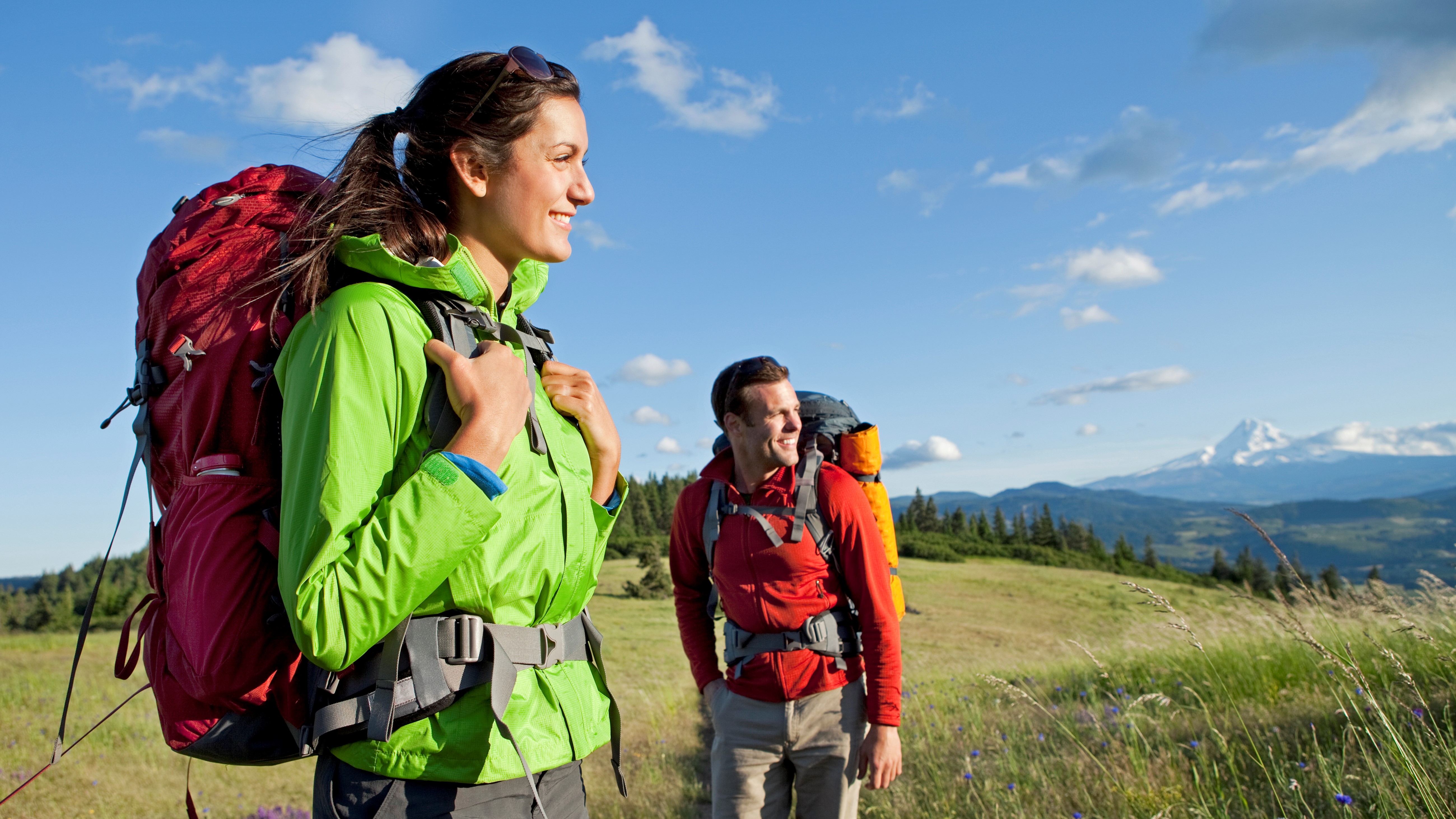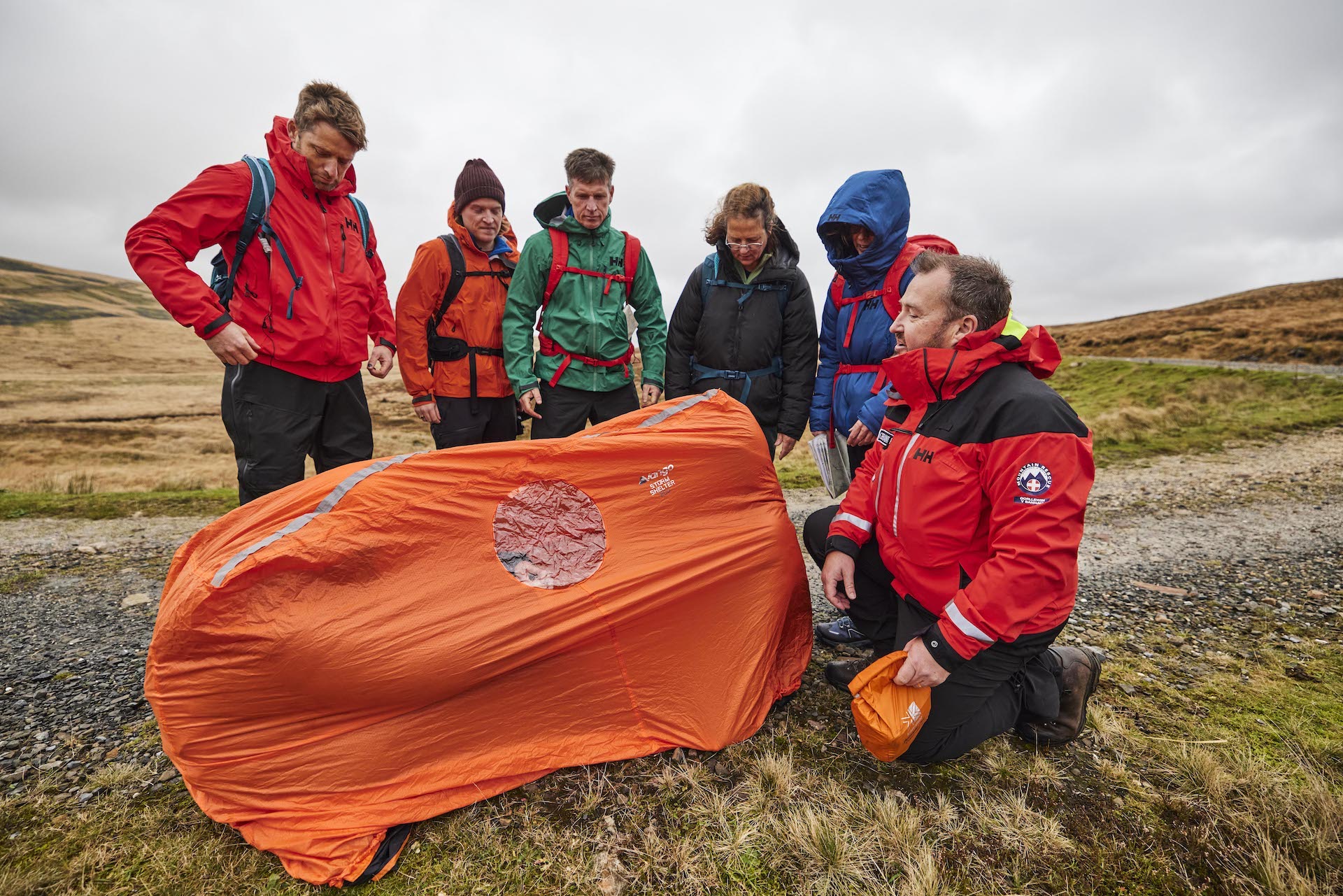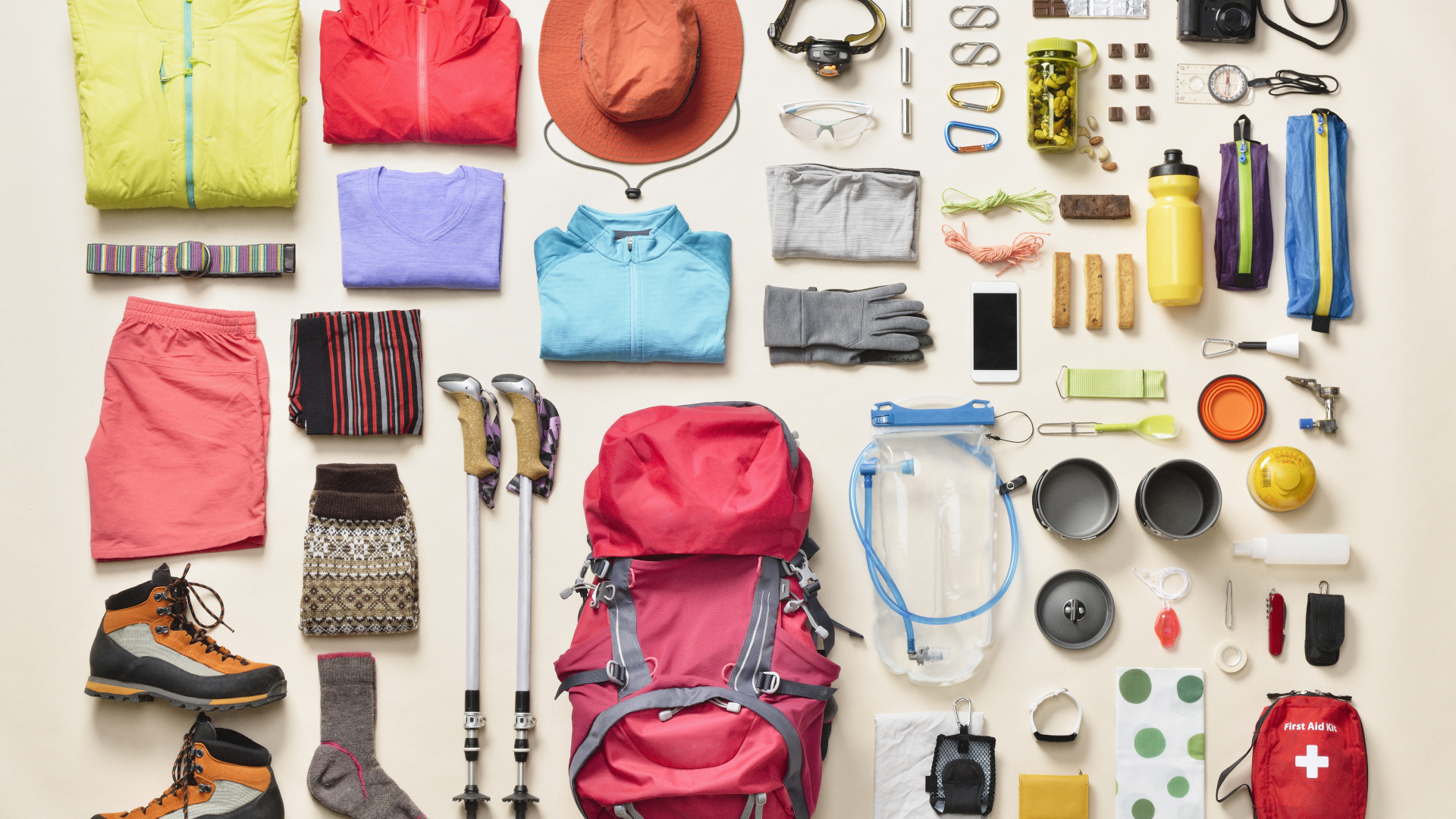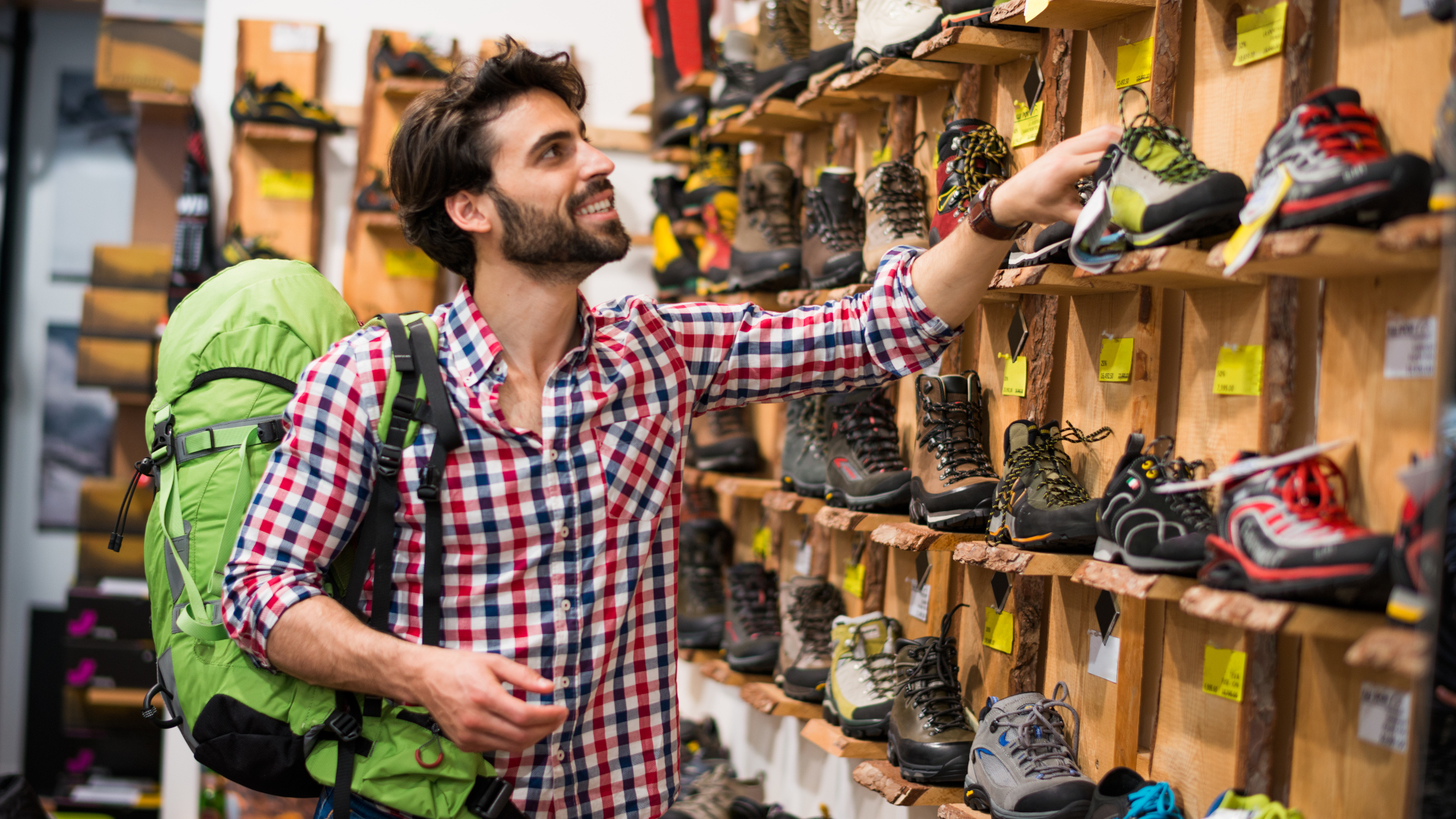How to rent outdoor gear for your next active vacation
Gear rentals can be cheaper, more convenient and better for the planet than buying kit – here’s how to go about it

Do you have big outdoor dreams but a tiny apartment? Perhaps you want to trek across Acadia National Park in winter, but you live in Southern California where snowshoes are hardly a must-have accessory? Getting outdoors requires a lot of gear (unless you’re a trail runner) and owning a lot of gear might be inconvenient for many reasons such as expense, storage and transportation, never mind the fact that some adventures you only plan to do once.
Whether you’re camping in Yosemite, skiing in Vail or hiking in Olympic National Park, you’re going to need good gear, but in many cases, renting gear makes a lot more sense than buying it. Though I own a lot of outdoor gear for camping, skiing, hiking and rock climbing, I've been known to rent items I don't own, such as crampons for glacier trekking in the Alps and a dry suit for canyoneering in Zion.
If you’re wondering whether you really need that 4-person tent, pair of skis or avalanche beacon, read on to discover the benefits of outdoor gear rentals, and how to go about it for your next adventure.

What are the benefits of renting outdoor gear?
There are tons of great benefits to renting outdoor gear. For every piece of gear you buy, you have to find a place to store it, which is why I have tents and sleeping bags taking up every corner of my apartment. Then you have to transport it for trips which can be a costly hassle if you’re flying. Throughout the year, you also need to maintain it, clean it after use and of course replace it when it wears out. That all requires energy and more money, but with renting you basically don’t have to worry about any of that.
When you cut down on the amount of gear you buy, it also reduces the market demand which ultimately cuts down on how much gear needs to be produced. Lower production is better for the planet, which makes gear rentals the more environmentally friendly option over buying a sleeping pad that’s only going to gather dust in your garage anyway.
Then you’ve got the fact that, if you don’t have a huge interest in a particular activity and are just doing it once, you probably can’t justify making the purchases or the commitment it takes to take care of the gear.

But there's another great reason to rent gear over buying it according to David Diehl, Director of Gear and Delivery Services at RightOn Trek gear rentals right outside Glacier National Park, and that’s because different adventures require different gear, and what you have might not suit the conditions you’re going to be experiencing.
All the latest inspiration, tips and guides to help you plan your next Advnture!
“The sizing and selection options are where the benefits of renting really stand out. Many people own a sleeping bag, but do they own a sleeping bag rated for the temperatures they’re going to be camping in?”
When I lived in Colorado and only camped between June and October, my trusty GoLite sleeping bag was suitable for every adventure. It was always cold at night, but always dry. Now that I’ve moved to Scotland, I can camp year-round but need several sleeping bags depending on the conditions. When you don’t have that option, Diehl explains, you might end up making poor decisions.
“Many of us have rationalized just going with what you’ve got and having a less enjoyable experience. We’ve lugged stoves that were too large, sleeping bags too cold, skipped out on having a GPS navigation and communication device, brought family size tents for a party of one”.
In other words, when you own gear that doesn’t quite fit your adventures, oftentimes you’ll just take it with you anyway, and that could be uncomfortable, or even dangerous if your sleeping bag temperature rating isn’t warm enough for where you’re going.
Finally, whether it’s skis or backpacks, gear rental shops always have top-of-the-line gear in great condition, which they replace frequently, so you might get better quality gear than what you’re prepared to pay for, and gear that’s in better condition than your raggedy old kit. Despite this, you’ll save money renting gear for the occasional expedition, and by that, I mean a lot of money – the 18-item backpacking all-inclusive set from RightOnTrek costs $56 a day, but Diehl says would run you nearly $3,000 if you were to buy it new.

What to rent, what to buy
It’s possible that you’re only ever planning on having one outdoor adventure in your life, in which case you’ll want to rent as much gear as you can, but for most other people, you may want to buy some items and rent others. What you choose to rent versus buy comes down to your personal values and the degree to which you’re committed to your activity, according to Diehl.
“The more frequently you expect to use an item, the more cost effective it is to purchase it rather than rent.”
For example, having your own sleeping bag can come in handy in a number of circumstances, from backpacking to crashing at a friend’s house, so it’s common for people to want to own one. Less used items, such as cross country skis, a backpacking backpack, snowshoes, GPS navigation and satellite communicators can be more convenient to rent, while you might find that your 2-person tent is the wrong size for a specific adventure and want to rent a smaller or larger one rather than buy a second tent.
For Mike Pescod of Abacus Mountain Guides who provides skills training and mountain guiding in Scotland and the Alps, an emergency shelter (otherwise known as a bothy bag), is something no one should head into the mountains without.
“An emergency shelter totally changes your experience if something goes wrong, but they're quite nice to have your lunch in as well. Or if somebody’s laces have come undone and they need to spend ten minutes sorting that out? Get inside your shelter if it’s raining and it’s good. You might not want to get out again.”
That said, he highly recommends renting one for a nominal fee rather than owning one, especially if you’re heading out on a one-off expedition.

How to rent outdoor gear for your next active vacation
Ready to rent gear but don’t know where to start? Just follow these steps and you can hit the mountains with every tool in your belt, but without the expense or added hassle.
1. Plan your trip
Start by planning your trip, which will tell you not only what activities you're going to do, but also the season during which you’ll be traveling and how you’re going to get there. Summer camping will require different gear to winter camping, while a road trip might change what you rent and how much you carry compared to a trip where you’re traveling by plane or on foot. Once you know where you’re going, you can start researching gear rental shops in the area, too.

2. Find out what gear you need
Once you have your trip booked, you’ll need to find out exactly what gear you need, and subtract what you already own to figure out what remains to be rented. If you’re experienced in the outdoors, this will be as simple as making a list, but if not, remember that gear rental shops are staffed by experts who will be happy to assist you or speak to a more experienced friend or guide to make your gear list.
3. Choose between pickup or delivery
Much like ordering takeout, there are two ways to get your gear: go and pick it up, or have it delivered to you. The most straightforward is probably to find a rental store near where you’re going, reserve your gear online or over the phone in advance, then head there when you land. This route means you’ll be able to ask questions about your gear when you pick it up, or make substitutions if something doesn’t fit.
The second option is to do everything online and have it shipped to you. Companies like Kitlender let you reserve your gear on their website, then they deliver it to you, you pack it up and travel with it. The downside to this is that you have to fly with it, which may cost extra, but you may feel more comfortable knowing you have everything you need when you set off. You may also be able to have your kit delivered to your destination, such as a friend’s house or a hotel, which means you skip the visit to the gear shop and don’t have to travel with it.
RightOn Trek manages to marry these two approaches, depositing your pre-booked gear into a storage locker so that you can pick it up on your way into the park, and it will be interesting to see if this ultra-convenient method catches hold.

4. Have fun – and take care of your gear
Once you’ve got your gear, it’s time to have a great adventure. In doing so, you’ll want to take good care of your gear – something some of us are guilty of forgetting about when it’s not our gear. Normal wear and tear is expected when it comes to outdoor gear, and you won’t be penalized for returning a tent that doesn’t look brand new or a sleeping bag that smells of campfire smoke, but you will be charged for more serious damage that’s obviously been caused by recklessness.
Caring for your gear largely depends on what kind of gear it is, but in general, handle it with care and try not to pack things away wet for starters.
5. Return your gear
When your adventure is over, it’s time to return your gear, either by swinging by the gear store or packing it up in prepaid envelopes and boxes and sending it back. Make sure you do this in a timely fashion to avoid extra charges, and do an inventory beforehand to make sure everything is present. Gear places will clean your gear for the next user, though if something is mud caked you might give it a hose down out of courtesy.
Julia Clarke is a staff writer for Advnture.com and the author of the book Restorative Yoga for Beginners. She loves to explore mountains on foot, bike, skis and belay and then recover on the the yoga mat. Julia graduated with a degree in journalism in 2004 and spent eight years working as a radio presenter in Kansas City, Vermont, Boston and New York City before discovering the joys of the Rocky Mountains. She then detoured west to Colorado and enjoyed 11 years teaching yoga in Vail before returning to her hometown of Glasgow, Scotland in 2020 to focus on family and writing.

